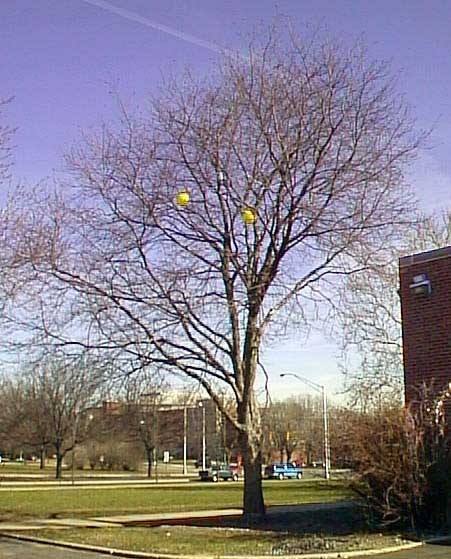Background
In Ohio the American hophornbeam (see photo below) has attracted the attention of many urban foresters as as a candidate for planting under powerlines. The tree typically reaches sizes of about 40 feet. The tree has an attractive outline, attractive bark, and minimal fruit. Planners should be cautioned however, that this tree is quite sensitive to soil compaction, at least as sensitive as sugar maple or American beech. It is also sensitive to poor drainage. As with many forest edge/understory species, this plants tolerates stress better when it is partially shaded, and will show signs of stress more readily in high light situations.
Ohio State University tests showed that decline due to stress may not be evident for the first 6-8 years, and the tree should be monitored. It is possible that hophornbeams are susceptible to borers under stressed conditions. Borers are very difficult to detect on these trees and this issue needs further study. The Ohio Street Tree Evaluation Project showed approximately a 10% survival rate over 30 years. The tree clearly warrants further urban testing.
The tree below is planted in a moderately high stress area on The Ohio State Univ. campus in Columbus Ohio (zone 5) where it is subject to frequent foot traffic, and mediocre drainage. It is planted on the northwest corner of a building, and shows slight signs of stress. It's partially shaded location may be benefiting the plant and helping it to tolerate site stress.
On the plus side, it will tolerate soil pH up to about 8, but prefers more neutral to slightly acid soils (pH 6-7.5) especially if stressed. It will grow well in zones 4-6. As one might expect, this tree is quite shade tolerant, and will tolerate modestly dry soils. It may be a good choice for planting where buildings or other large shade trees already exist.
For more information see the Ohio Stree Tree Evaluation Project, Hophornbeam Page.
